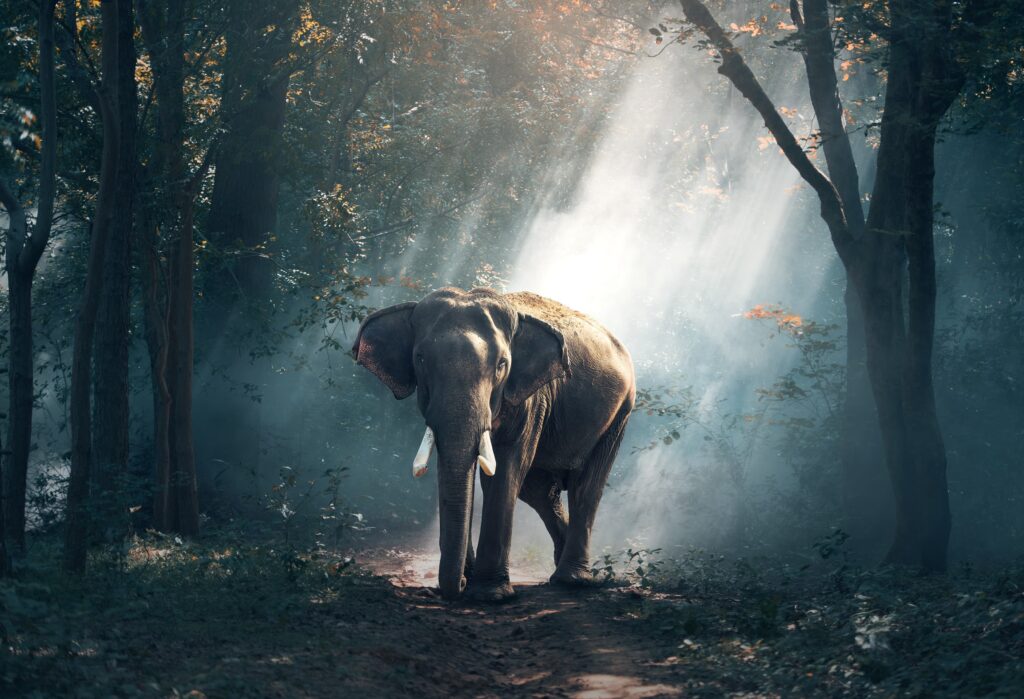The Earth is teeming with life: thousands of species of vertebrates (mammals, reptiles, fish and birds); invertebrates (insects, crustaceans and protozoa); trees, flowers, shrubs and grasses; an amazing array of bacteria, algae and other single-celled organisms that inhabit some red-hot mouths of deep-sea volcanoes. And yet, this rich abundance of flora and fauna seems paltry compared to ecosystems of the deep past: it is estimated that 99.9 percent of all species have become extinct since the beginning of life on Earth.
Why? You can get some idea of the main reasons why animals are disappearing from the face of the Earth by reading the 10 points below.
- asteroids.
This is the first thing most people associate with the word “animal extinction,” and with good reason, since we all know the effects of the asteroid impact on the Yucatan Peninsula in Mexico, which led to the extinction of the dinosaurs 65 million years ago. It is likely that many of Earth’s mass extinctions are caused by similar events, and astronomers are constantly on the lookout for comets or meteorites that could wipe out human civilization.
- climate change
Even in the absence of the impact of a major asteroid or comet that could potentially cause a significant drop in temperature, climate change is a constant threat to most animals. We need look no further than the coenza of the last ice age, about 11,000 years ago, when various megafauna were unable to adapt to rapidly rising temperatures (they also suffered from lack of food and hunting by humans).
We all know about the long-term threats of global warming, a gift from modern civilization!
- diseases.
Although it is unusual for a disease to single-handedly wipe out an entire species, due to lack of food, loss of habitat, and lack of genetic diversity – the introduction of a particularly deadly virus or bacteria at the wrong time can cause irreparable damage. Proof of this theory can be found among amphibians, which fall victim to a fungal infection that affects the skin of frogs, toads, newts and salamanders, thereby killing them within a few weeks. Also a telling example, is the pandemic plague, which killed more than a third of Europe’s population in the Middle Ages.
- Loss of habitat
Most animal species need a certain area in which they can feed, breed and raise their young, and (if necessary) expand their population. A single bird may be content with a branch of a tall tree, while large predatory mammals (such as Bengal tigers) measure their possessions in square kilometers. As human civilization inexorably expands on wildlife, natural habitats diminish, thereby limiting and reducing animal populations, making them more susceptible to the other extinction factors listed in this article.
- Lack of genetic diversity
Once a species has declined in numbers, there is little choice of free mates left, and a corresponding lack of genetic diversity. This means that it is far better to marry a complete stranger than a cousin, as you risk getting genetically unhealthy and susceptible offspring. A good example, is the African cheetah, which suffers from a dramatic decline in numbers from low genetic diversity, thereby reducing the species’ survivability.
- Adapting to a changing environment
Here’s where we risk succumbing to a dangerous tautology: by definition, “more adapted” populations always trump those that lag behind, but it’s often not known exactly who is better adapted. For example, no one would have thought that prehistoric mammals were better adapted than dinosaurs until the Earth collided with an asteroid. It usually takes thousands and sometimes millions of years to identify better adapted species, but the fact is that the vast majority of animals go extinct in that period of time.
- Invasive species.
While most species struggle to survive over eons (the time span of geologic history), sometimes natural selection is more bloody and one-sided. If a plant or animal from one ecosystem is accidentally moved to another, it can spread wildly, wiping out native populations. That’s why American botanists cringe at the mention of kudzu, a weed that was imported from Japan in the late 19th century and is now spreading at a rate of 150,000 hectares a year, displacing native vegetation.
- Food shortage.
Mass starvation is a quick, one-way and unmistakable road to extinction, especially since populations weakened by starvation are more vulnerable to disease and predators. For example, imagine that scientists found a way to eliminate malaria forever by exterminating all mosquitoes from the face of the Earth. At first glance, this may seem like good news for humans, but think of the domino effect. All creatures that feed on mosquitoes (like bats and frogs) will go extinct, followed by animals that feed on bats and frogs, and so on down the food chain. Not a good scenario, you’ll agree.
- Pollution
Marine animals such as fish, seals, corals and crustaceans are extremely sensitive to traces of toxic chemicals in lakes, rivers, seas and oceans. Dramatic changes in oxygen levels caused by industrial pollution can cause many populations of aquatic animals to go extinct. Although there is no evidence of the extinction of entire species from environmental disasters (such as oil spills), continued exposure to pollution can make plants and animals more susceptible to other threats on this list.
- Man
Humans have only colonized the Earth in the last 50,000 years, so it is unfair to blame Homo sapiens for the extinction of most animal species. Nevertheless, there is no doubt that we have caused ecological devastation in a short period of time by exterminating entire species.
